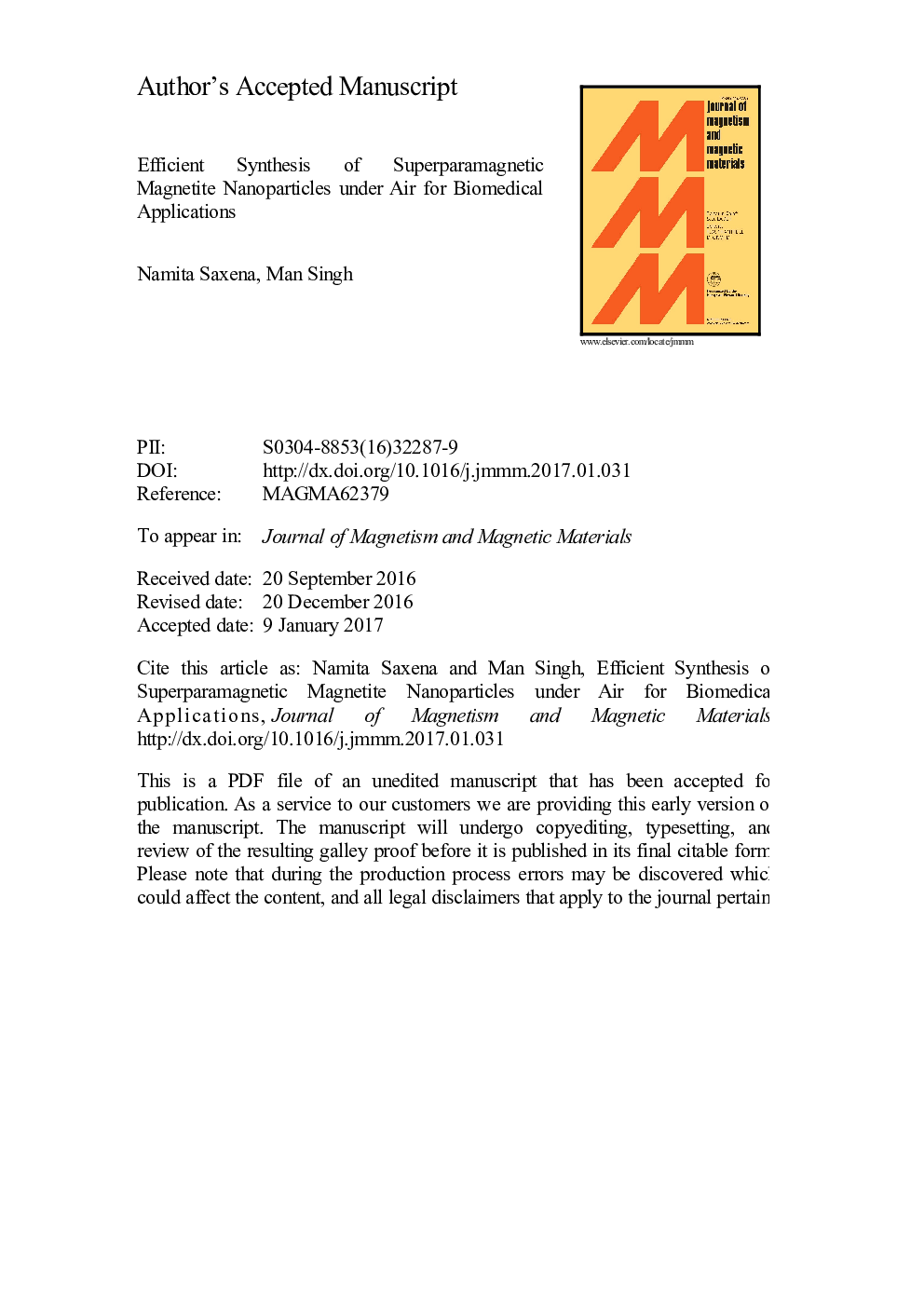| Article ID | Journal | Published Year | Pages | File Type |
|---|---|---|---|---|
| 5491108 | Journal of Magnetism and Magnetic Materials | 2017 | 33 Pages |
Abstract
The facile co-precipitation process of synthesising Superparamagnetic Iron Oxide Nanoparticles (SPIONs) especially magnetite was investigated and simplified, to develop a reproducible and scaled up synthesis process under air, for producing particles with enhanced percentage of magnetite, thus eliminating the crucial and complicated need of using the inert atmosphere. Presence of magnetite was confirmed by XRD, TEM, and Raman spectroscopy. Efficiency of synthesising magnetite was increased up to approx. â¼58Â wt%, under air with no other phases but maghemite present. Alkali concentration was optimised, and particles with better magnetisation values were synthesised. The approximate weight percentage of magnetite was calculated using the simple and rapid XRD peak deconvolution method. Higher pH values from 13 to14 were investigated in the study while alkali concentration was varied from 0.5 to 4Â M. 1Molar NaOH with a final pH of 13.4 was found to be optimum. Well crystallised particles with approx. 6-12Â nm size, narrow size distribution and cubo-spheroidal shape were synthesised. Particles were Superparamagnetic with high values of saturation magnetisation of up to 68Â emu/g and negligible values of remanence and coercivity. A reaction yield of up to 62% was obtained. Hydrophilic coated particles were produced in a single, one step facile process for biomedical applications, using optimised parameters of pH and alkali concentration obtained in the study. Single domain particles with good magnetisation formed stable aqueous dispersions. FTIR, UV-Visible and DLS were used to confirm the coating and dispersion stabilities of the particles. These particles have the requisite properties required for application in different biomedical fields.
Related Topics
Physical Sciences and Engineering
Physics and Astronomy
Condensed Matter Physics
Authors
Namita Saxena, Man Singh,
